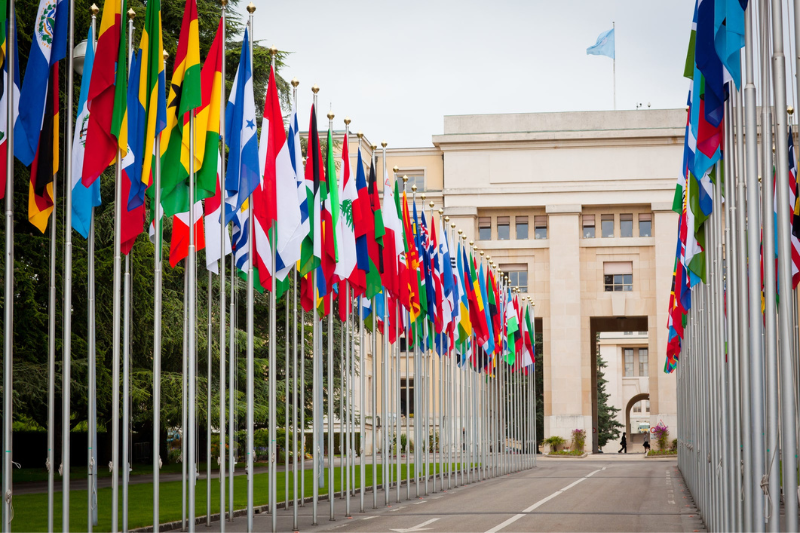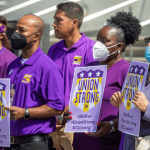
human rights at sea the geneva declaration
According to Live Jacob Sydness, Vice President of Sustainable Business, and Neil Henderson, Senior Executive, Industry Liaison of Gard P&I Club, history has shown that, as with many progressive steps in the field of human rights, committed individuals and non-governmental organizations are the ones who drive change at an institutional or intergovernmental level.
The Geneva Declaration on the Rights of the Child was published in Geneva 100 years ago by the International Save the Children Union. It presented the document to the League of Nations, the forerunner of the United Nations, a year later, and on September 26, 1924, the League of Nations adopted it.
It was composed of five articles outlining the responsibilities and care that were due to every child, regardless of race, nationality, or religious beliefs. It was the first human rights document that had received intergovernmental approval. Since then, the text has changed and is now known as the 1989 UN Convention on the Rights of the Child.
A second Geneva Declaration was published in Geneva on March 1 of last year. The Geneva Declaration on Human Rights at Sea (GDHRAS) was published this time by the nonprofit organization Human Rights at Sea. It outlines the following four fundamental ideas:
The horrific events of the First World War and the suffering of children served as the impetus for the Geneva Declaration on the Rights of the Child. The GDHRAS was not sparked by a single incident, but the Covid pandemic experience of fishermen and seafarers undoubtedly raised public awareness of the need for it. Because most of us spend our lives on land, it has been overlooked for so long that there is a need for a declaration of rights at sea.
Keep Reading
Along with the four guiding principles, the GDHRAS outlines a comprehensive list of human rights that apply at sea and are taken from other international documents like the UN Convention on the Rights of the Child, the Refugee Convention, and the Universal Declaration of Human Rights. These include freedoms that all people on the land take for granted, including the right to life, the freedom from torture, the freedom from slavery, the freedom from arbitrary detention and arrest, the right to safe and sanitary working conditions, the right to social security, and the right to organize and join a union.
Guidelines for promoting the observance of human rights at sea are also included in the GDHRAS. These give flag states, coastal states, and port states concrete guidance on how to better protect and advance human rights within their respective, overlapping jurisdictions. One such piece of advice to flag states is to enlist the assistance of other nations to enforce human rights laws on board all ships flying their flag if they lack a naval force that can do so. Another directive, aimed at coastal states, is to grant permits for mining exploration and fishing within EEZs, subject to the licensees’ adherence to human rights. It advises coastal states to check the licensed ship owners’ vessels regularly after that.
What is required, then, to turn the GDHRAS from a soft law initiative that promotes this odd and underappreciated area of human rights law into an international convention or something comparable? NGOs, charities, and dedicated people can only make so much progress. To publicly support the GDHRAS’s guiding principles and ask the UN to adopt them, it needs the backing of nation-states. With the recent High Seas Treaty, we have recently seen what is possible in terms of advancing the protection of the natural environment of our oceans. However, as is all too frequently the case in the maritime environment, resources are prioritized over people on the high seas.
The horrific death toll last month off the coast of Messenia, Greece, caused by a fishing trawler carrying up to 750 migrants sinking is likely the deadliest incident to date in the ongoing fight for the proper recognition and protection of maritime workers’ human rights. However, daily violations of human rights take place everywhere. The creation of international legal instruments requires time. It took 19 years to negotiate the High Seas Treaty, and it will probably take a few more for it to receive enough ratifications to become effective. If it takes the same time to create a legal framework protecting human rights at sea, tens of thousands more people will suffer.
What can the industry do to fill the gap? Every chance we get, we should draw attention to the problem. Since its establishment in 2014, the charity Human Rights at Sea, among others, has made significant progress in this area. Those initiatives require the support of the rest of the industry.
We can guarantee that their human rights are acknowledged and upheld in any interactions we have, whether direct or indirect, with seafarers, migrants, stowaways, pirates, or fishermen. From a practical standpoint, we can demand that best practices are permanently adhered to, including the treatment of stowaways with compassion and respect, the fair treatment of seafarers when vessels are detained and arrested, and the prompt repatriation of abandoned fishermen and seafarers, and the payment of unpaid wages.
As a marine insurer, we’ll keep assisting our Members’ ships when they divert to save lives at sea, help those who are saved or found onboard, and take care of and repatriate anyone hurt while performing their duties. When crews of vessels of all types are abandoned or detained, we will continue to support the families of those affected and provide a safety net following the Maritime Labour Convention. We implore others in the sector to follow suit.









